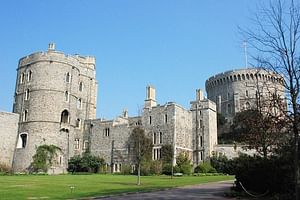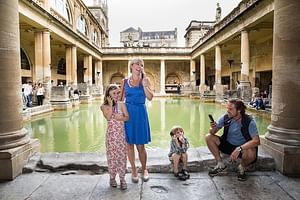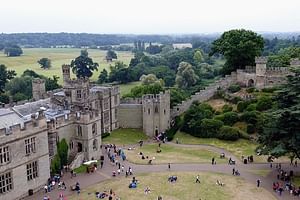The Jurassic Coast is a truly outstanding place to explore Earth’s history, the evolution of life and the natural processes that shape our world.
Fossils teach us about prehistoric life. Along the Jurassic Coast fossils help to show how life adapted and changed as 185 million years slowly passed.
Here we find early dinosaurs and pterosaurs, forests that grew before the first flowers appeared, and giant marine reptiles more powerful and ferocious than any T-Rex.
Lulworth Cove makes for a superb day out for all ages.
A beautiful secluded cove whose existence is owed to the collision of continents and the birth of the Alps.
Walking the South West Coast Path at Lulworth Cove is a brilliant experience, offering stunning views across the Jurassic Coast
Walking the coast path to the east of Lulworth Cove brings you to the incredible geological formations of Worbarrow Bay and the mysteriously abandoned village of Tyneham. To the west is the iconic Durdle Door
Duration
The tour starts at
-
The Jurassic Coast is a truly outstanding place to explore Earth’s history, the evolution of life and the natural processes that shape our world.
The Jurassic Coast is a hugely diverse and beautiful...
The Jurassic Coast is a truly outstanding place to explore Earth’s history, the evolution of life and the natural processes that shape our world.
The Jurassic Coast is a hugely diverse and beautiful landscape underpinned by incredible geology of global importance. In 2001 it became a World Heritage Site. 252 million years ago: This area of the Earth’s crust was stretching and sinking. As it sank, layers of sediment piled one on top of the other to form rocks. First in baking deserts during the Triassic Period (252 –201 million years ago) and then in the Jurassic period (201 – 145 million years ago), sea level rose and changed the desert into a tropical sea. At the close of the Jurassic sea levels fell, a forest grew then died and was buried beneath the sediments of lagoons swamps and rivers. This was the start of the Cretaceous (145 – 66 million years ago. During this Period, earth movements tilted the rock layers to the east. The rocks pushed up in the west were eroded. Soon, the sea rose again and during the rest of the retaceous sandstone and Chalk were laid down across the region, burying the tilted layers of older rock. Since that time erosion has carved this remarkable rock record into the landscape we see today.
Through this coastline’s unique geology, visitors can understand the profound environmental changes that occur across millions of years of time. The fossils of strange and terrifying extinct creatures that tumble from its cliffs have the potential to change the way we see the world. And out of its rock falls, landslides and storm-battered beaches we gain insights into the creation of the coastline itself.
In short, the Jurassic Coast is a truly outstanding place to explore Earth’s history, the evolution of life and the natural processes that shape our world
The different rocks crammed into this 95-mile stretch of Dorset and East Devon coastline create a wonderfully varied landscape. There are opportunities here for many different and unforgettable experiences, from lazy-summer beach days and family BBQs to soul-stirring walks in wind-swept winter.
The landscape of the Jurassic Coast is a feast for the senses. Its stories stimulate mind, body and soul. It captures our imagination and invites us to find a sense of belonging, to return again and again to experience all it has to offer.
-
Durdle Door is one of the Jurassic Coast’s most iconic landscapes. It is a natural arch, formed from a layer of hard limestone standing almost vertically out of the sea.
Pay a visit to the nearby Lu...
Durdle Door is one of the Jurassic Coast’s most iconic landscapes. It is a natural arch, formed from a layer of hard limestone standing almost vertically out of the sea.
Pay a visit to the nearby Lulworth Cove Visitor Centre, where you can learn more about Durdle Door and Lulworth Cove, two of the most iconic geological features on the Jurassic Coast.
Walking the South West Coast Path at Durdle Door offers spectacular views across the Jurassic Coast. We recommend an Ordnance Survey map to accompany a day’s walking.
Walking the coast path to the east of Durdle Door brings you to the famous Lulworth Cove and Stair Hole. Further afield are the incredible geological formations of Worbarrow Bay and the eerie abandoned village of Tyneham. To the west are the coastal hamlets of Osmington Mills and Ringstead.
Around 25 million years ago the African tectonic plate collided with the European plate. The huge pressures generated heaved and folded rocks to create the mountain chain we know as the Alps.
Ripples from that collision spread north through the Earth’s crust and gently folded the rocks here, in what would become south Dorset and Purbeck.
Air-conditioned vehicle
Bottled water
Parking Fees
Private transportation
WiFi on board
Entry to any meusum or other Historical sites
Gratuities













